

Another episode, another amazing 60 minutes. We’re getting spoiled here with Second Chance; we’re bound for a dud of an episode at some point, right? Eh, let’s just enjoy the ride.
But while I can love each and every Wednesday night, I’m thinking that Stephen might look back on this particular Wednesday and wonder if he made the right move.
Before we get into judging the Big Move™ last night, let’s talk some theory. Today, we’re going to discuss gatekeeping theory. I’ve been excited to apply this one to the show since gatekeeping is my primary area of research.
Now, most people have heard of gatekeeping to a point, but they don’t really understand it in a theoretical manner. Heck, most people who study media don’t even understand gatekeeping. You see, back in 1950, when David Manning White first applied gatekeeping theory to journalism studies, he basically described the theory as before stories get published, they have to go through a process where people serve as gatekeepers and decide whether something passes through said gates.
OK, so you want more specifics. Early gatekeeping research, like White’s, basically looked at how and why “gatekeepers,” usually editors, chose to include or not include some stories in the next day’s newspaper. But over time, gatekeeping theory has become far more sophisticated. And, when we study it today, it really examines the many different phenomena that impact the process by which information gets selected, edited and eventually published.
To get even more specific, to study gatekeeping, we separate the world of influences into five different levels of analysis: the individual, the routine, the organization, the social institution, and the social system. That all sounds way too complicated. Really, all this means is that there are five different types of influence on news.
Let’s go through each level really quickly, so you can understand when we apply this to Second Chance. So the individual level looks at journalists themselves. This is basically what White did originally. Journalists make all kinds of decisions based on a whole lot of reasons such as their age, class, gender, religion, area of origin … so many different demographic factors. All of these factors make a difference. The routine level of influence explains all the different norms of sorts in journalism, the things that happen regardless of where we work. So, for example, most journalists work a beat or they have the same definition of news or they gather news in the same manner. The organizational level explains the influences of where you work. Some news organizations cover different things or they are more market-driven. You know, the New York Times is different than the New York Post, even if they have roughly similar people working at both and practice the same norms of journalism.
The last two levels are a little trickier. The social institutional level describes all the different industries, the non-journalism ones, that influence journalism. So, for example, the advertising industry, which predominantly pays for journalism. Or the government, which makes laws that impact journalism. Or the public relations industry, which tries to influence journalists. The final level, the social system level, just describes, basically, the culture we live in. News is going to look different in the United States than it does is in, say, North Korea.
If you want to learn more about gatekeeping, I’m going to plug my Ph.D. advisor’s book. You can check out Pam Shoemaker and Tim Vos’ (my advisor) Gatekeeping Theory, which is really readable and interesting no matter your background.
But now that we have a basic understanding of theory, let’s apply it. You see, I think last night’s episode, and the decision Stephen made, really came from a lot of different influences. Again, I think in the end it was a bad move, but let’s look at it.
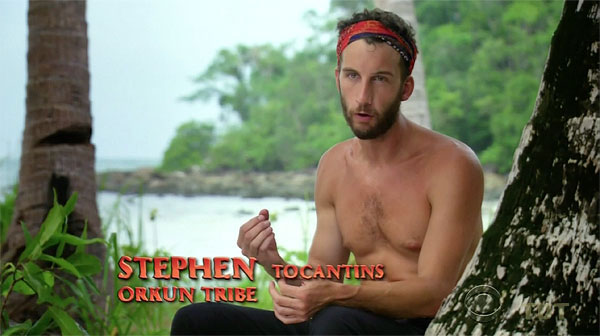
So Stephen, as we know, is obsessed with making big moves. Last week, I wondered whether people even need to make big moves and I’m still under the impression that it’s a Probstian myth that a Big Move™ is needed to win. But we know Stephen thinks so. There are a layers to his decision.
On the individual level, we know that Stephen suffered in Tocantins because the jury thought he rode J.T.’s coattails. That means Stephen, more acutely than most other contestants, understands the value of a big move, of being able to specifically point to something at the end. So he thinks he needs to make one and he’s been itching for weeks.
On the routines level, we know in Survivor, regardless of season, there is going to be an immunity challenge and then a Tribal Council. Stephen knows this. These routines, every three days, keep building up Stephen’s desire for a move. You usually hear good contestants say that Final 9 or Final 7 is the place to make a big move, but Stephen started itching at like Final 13. He couldn’t execute those two weeks because of Joe winning. Instead of waiting, Stephen just needed to use the Witches Coven and make the move.
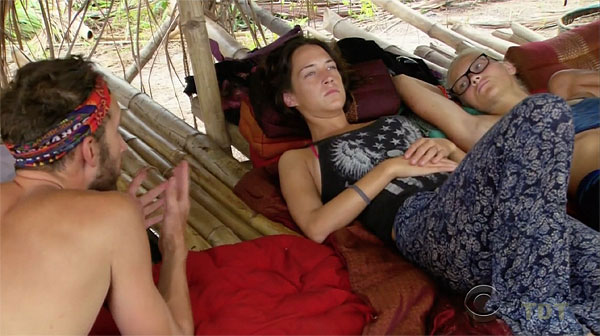
The organizational influence on the move is what we talked about last week. Probst, because he wants the greatest TV show possible, always goes on and on about making big moves. Just think if you worked at a place and your boss constantly talked about the greatness of doing something. Even if you thought it wasn’t a great idea, you might just do it because you know it’ll please your boss. That’s the big move in today’s Survivor.
Let’s give Rob Cesternino and Josh Wigler credit as a social institutional influence. I’ve listened to most of the Evolution of Strategy and while it’s amazingly entertaining and I’d recommend it, I think a lot of times they’re talking about the same things but using different words. What does that mean? Well, it means Stephen thinks there has been a clear evolution of strategy. He keeps talking about it. We in the Survivor fandom keep shaking our heads whenever they mention “voting bloc” as new because we remember Cagayan. But Stephen thinks this evolution is happening and it’s impacting how he’s playing the game, willing to blindside his alliance and join forces with the folks on the bottom, the folks who he knows will slit his throat whenever it suits them.
The final level, the social system level of influence, has less application here. In the Survivor ecology, these players know what goes and what doesn’t. Everything they do has been done by someone else, so they implicitly know to do it.
So did Stephen make a good move? I’d love to discuss in the comments. I don’t think so. I think he should have taken out one of the women on the bottom before making a move. Separating Ciera and Kelley (Abi is eh) was important. They have three people. If this is a game of voting blocs, you have three and they have three and you just pissed off the other bloc, so you’re willingly hurting your position, in my mind. But all these different influences impacted Stephen’s decision, and now we get to see how it plays out.
OK, even though I get excited talking gatekeeping, we’ll end here. Let’s discuss the remaining Second Chancers:
Orkun
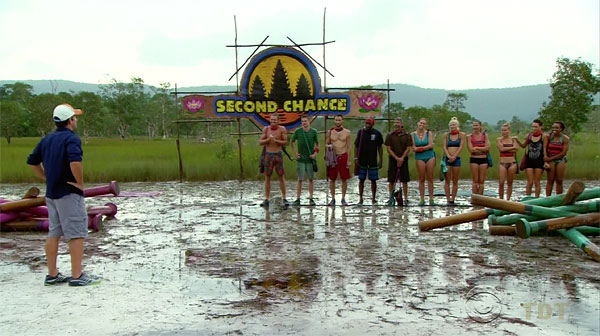
- 1. Spencer — I’m not sure about Jeremy or Stephen, but I am sure that Spencer made the right move. Since he’s been on the bottom most weeks, he hasn’t had much room to play for himself. This gives him something to talk about at final, and it gets rid of the person we know he’s said to have no relationship with. I don’t think Spencer’s getting the Winner’s Edit™ anymore, but he’s making good moves and doing so much better than I predicted.
- 2. Ciera — Ciera voted her mom off. Did you know that? Did you know she wants to make Big Moves™? Did you know that I think Probst is going to invite her on every single season if she promises to sit at Tribal Council and yell at folks for not playing the way she wants to play?
- 3. Abi-Maria — So invisible all of a sudden. Heck, this week producers wanted to include her so badly, all we got from her is that she poops. Abi poops. And it takes 10 minutes, even when she isn’t eating much. Good to know.
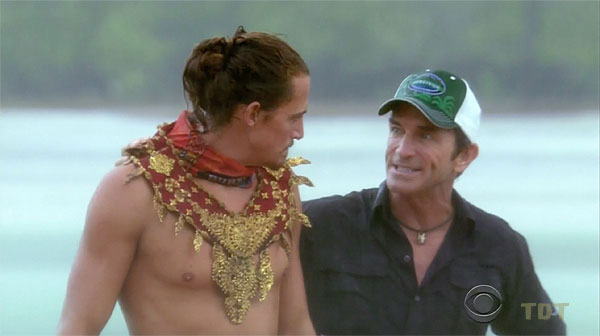 4. Joe — Joe is the Jesus of Survivor challenges. He came to Earth so that others don’t have to waste energy trying to win. He’s a god. I’m just going to assume he wins the whole season by never losing a challenge.
4. Joe — Joe is the Jesus of Survivor challenges. He came to Earth so that others don’t have to waste energy trying to win. He’s a god. I’m just going to assume he wins the whole season by never losing a challenge.- 5. Kelley — Great low-key playing this week from Kelley. I bet either her or Ciera goes home next week, though. That just seems to be how this season is going. Here’s hoping it’s Ciera though.
- 6. Keith — My favorite part of this week’s episode? Of course when a cameraman panned over during the reward challenge and there was Keith. You know what he did? I’ll give you one guess. Did you say spit? How the heck did you know?
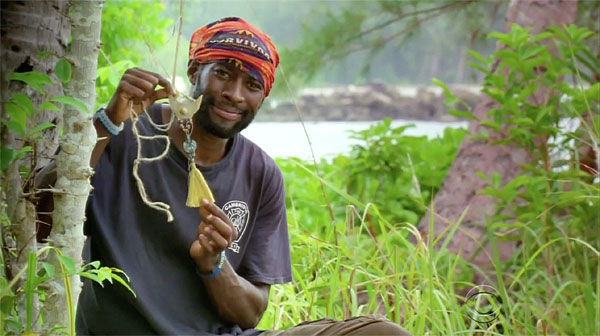 7. Jeremy — The Winner’s Edit™ firmly attached itself to Jeremy this week. That speech about Val and his kids … man, that was it. In all honesty, Jeremy’s winning this game. That’s my prediction. I know, I’m really going out on a limb here.
7. Jeremy — The Winner’s Edit™ firmly attached itself to Jeremy this week. That speech about Val and his kids … man, that was it. In all honesty, Jeremy’s winning this game. That’s my prediction. I know, I’m really going out on a limb here.- 8. Stephen — Well, Stephen is one of about four people I really hope wins this game, but I just don’t think that’s happening. His edit improved substantially over the last couple weeks, but now I think that’s only so he could make this move and then use his advantage poorly. That’s my guess. Here’s hoping I’m wrong.
- 9. Kimmi — Is the Rage of Kimmi going to be unleashed next week after this blindside? This Survivor columnist sure hopes so. I’m waiting.
- 10. Tasha — I’ve said it before and I’ll probably repeat myself again: I have no idea what to make of Tasha’s game. I think she’s playing amazingly well, but I just have a bad feeling. I can totally picture how each and every other person leaves the game. I’d probably be wrong about those predictions, but I can least see it. With Tasha, I don’t know. I’m confused. Thoughts?
That’s it. I hope everyone enjoys their Thanksgiving. And if you don’t celebrate Thanksgiving, well, then, have a good Thursday. I like Thursdays too.
 Pat Ferrucci started watching Survivor when episode two of Borneo first aired. He’s seen every episode since. Besides recapping here, he’ll be live-tweeting this season from the Mountain Time Zone. Why? Because nobody cares about the Mountain Time Zone except when they want to ski. Follow him @patferrucci for Survivor stuff and tweets about anything and everything that enters his feeble mind.
Pat Ferrucci started watching Survivor when episode two of Borneo first aired. He’s seen every episode since. Besides recapping here, he’ll be live-tweeting this season from the Mountain Time Zone. Why? Because nobody cares about the Mountain Time Zone except when they want to ski. Follow him @patferrucci for Survivor stuff and tweets about anything and everything that enters his feeble mind.
- Index of articles
- Pre-season preview
- Ep.1: Vytas, SIT down
- Ep.2: Varner teaches the Old School
- Ep.3: Tasha sets the Tribal agenda
- Ep.4: Abi continues cultivating an irrational gameplan
- Ep.5: Let's get ethical
- Ep.6: Follow the leader... or not
- Ep.7: Framing how it all went down
- Ep.8: Second Chance primed for an incredible end game
- Ep.9: Did Stephen just open or close the gate to winning?
- Eps.10-11: Construction junction, how do you function?
- Ep.12: Spiraling toward what could be an amazing end
- Ep.13: Planning behavior before the finale
- Ep.14: Wrapping up a stellar season